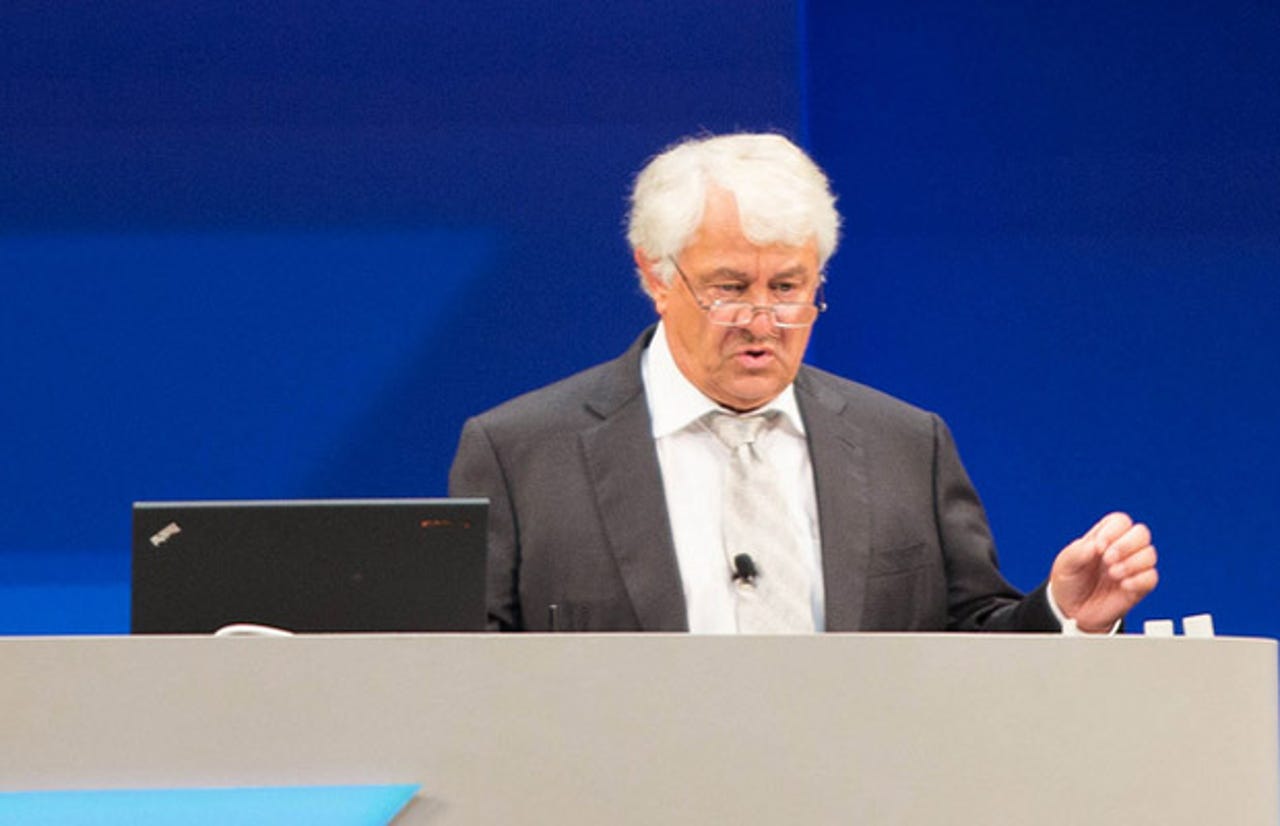At Sapphire, SAP's Plattner swipes at critics, Oracle


ORLANDO—Hasso Plattner stormed onto the stage with a mission.
Dispel the myths.
Shatter the lies.
Clear the air about HANA, the company's in-memory database technology.
read more
The name is plastered everywhere here at SAP's annual Sapphire Now conference in Orlando, Florida. As it should be: the company formally announced the technology last year and proclaimed it to be its future. (The reaction was mixed: some companies were thrilled at its speed; others were skeptical of the hype around a 20-year-old concept.)
This year, the company staked its name on it, and this week, it walked the talk by moving several of its products—including its core Business Suite—to HANA.
This morning, Plattner used his closing keynote to push back on HANA's critics and clear the confusion around his company's flagship platform. In a little over an hour, Plattner lobbed bombs at the technology press (uninformed!), rival Oracle (behind the times!) and engineers who think that column store is old hat.
"After four years of preaching HANA, we have reached a relative climax," Plattner said. "It's not about HANA anymore. It's about the applications on HANA."
Plattner began by explaining what customers have been asking for. Ultimately, he said, they want a system to run the business; a wide range of applications; instant monitoring of financials, sales and other business data; full integration with other apps in the cloud; high availability; security; flexibility; extensibility of data and functions; and full access to all applications from mobile devices.
"You expect lower cost despite increasing functionality," he said. "You want to have a guaranteed path to innovation."
Core to this is the company's increasing embrace of the cloud, in all of its forms. A lower total cost of ownership, less disruptive upgrades and "a significant reduction of labor" can all be had, Plattner said. It's not something to be feared.
"There is flexibility in the licensing model," he said. "In the cloud, we can have everything."
So what of HANA, then? There are far too many haters out there, Plattner said.
Like the technology press. "I know there is freedom of speech in the United States, [but] I could not find the statement where it says, 'There is a freedom of making up facts,'" he needled.
And Oracle. "You know that I love Oracle. We love each other," he said, grinning. "Oracle made O3. Twenty years later, probably we can give something back with HANA." He laughed at his own joke.
So Plattner used his time to bust some myths about his beloved platform.
The first? That it's not possible to do virtualization with HANA.
"HANA runs totally virtualized," Plattner said. "Do we want to run a $50 billion company virtualized? Certainly not. Why should we do this? Virtualization is good when we have a large computer and we want to chop it up into many small ones."
The second: HANA needs proprietary hardware.
"HANA uses standard x86 hardware," Plattner said, listing IBM, Dell, HP, Fujtisu, Hitachi and other OEMs as proof. "This is all based on Intel reference architecture."
The third: HANA doesn't support multi-tenancy.
"Guess what Business ByDesign runs in?" Plattner asked. SuccessFactors? Ariba? His answer: "Multi-tenancy."
"I know what I'm talking about because we bought one or two of these companies," he said.
The fourth myth: that adopting HANA is disruptive to business.
"It is not disruptive," Plattner said in retort. "We do not change the data definitions. We change the way we store them."
The fifth? That HANA is "not ready for prime time." Plattner simply displayed on the enormous screen behind him a long list of companies licensing the technology. Among them: Pfizer, ConAgra.
The sixth myth: that HANA was only for SAP's own applications.
"That hurts me," Plattner said, clutching his chest. "That really, really hurts me."
More than 60 percent of HANA use is outside of SAP applications, he said, and 431 startup companies—Optessa, Nexvisionix, EasyAsk, FanAppz, Celonis, Ovigele, Agile, Alegri, VMS, Webtalk, Precise, HyperBees among them—are on HANA.
"This is the future of SAP," Plattner said.
And the final myth: that HANA uses an old concept of columnar store.
"It's true! Twenty years old," Plattner said with exasperation. "Guess why we bought Sybase? They have a whole package of columnar store. Probably will be useful."
During his presentation, you could sense Plattner's frustration with the degree of skepticism that HANA has been met with. No matter what anybody says, he seemed to say to his audience, this is what I'm betting the company on. And I know it's a winner.
"HANA is a platform," he said. "It is not just a database."
"You put HANA underneath and it runs. Just faster."